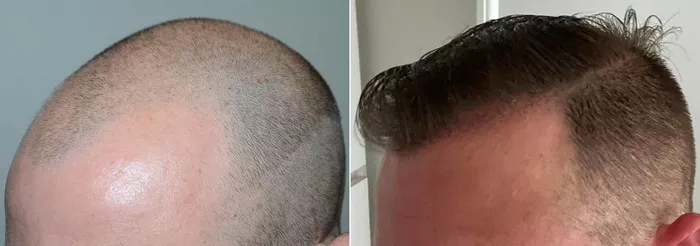Hair transplants have emerged as a popular and effective solution for individuals grappling with hair loss. As the demand for these procedures grows, questions about the number of times a hair transplant can be done become increasingly relevant. In this article, we will explore the factors influencing the frequency of hair transplants and considerations for those contemplating multiple procedures.
The Initial Hair Transplant: Setting Expectations
The success of a hair transplant largely depends on the initial procedure. Modern techniques, such as Follicular Unit Transplantation (FUT) and Follicular Unit Extraction (FUE), have revolutionized the field, offering natural-looking results with minimal scarring. The first hair transplant aims to address the primary concerns of the patient, whether it’s receding hairlines, thinning crowns, or bald spots.
Consideration of Donor Hair Supply: A Finite Resource
The availability of donor hair plays a crucial role in determining how many times a hair transplant can be done. Donor hair is typically harvested from the back and sides of the scalp, which are considered stable donor areas. However, this source is finite, and the quantity of available donor hair varies among individuals. A thorough assessment by a qualified surgeon helps determine the feasibility of additional procedures based on the patient’s donor hair supply.
Healing and Recovery: Essential Time Frames
The body requires time to heal and recover after a hair transplant. The initial healing period involves the closure of incisions, the establishment of blood supply to transplanted follicles, and the reduction of postoperative swelling. The majority of patients can resume normal activities within a week, but the full recovery process may take several months. Planning additional procedures too soon can compromise the success of the transplants and hinder optimal results.
Hair Growth Cycle: Patience is Key
Understanding the natural hair growth cycle is vital for managing expectations regarding multiple hair transplants. Hair goes through phases of growth, rest, and shedding. After a transplant, the newly implanted hair undergoes a shedding phase before entering a regrowth phase. This process takes time, and results become apparent gradually. Patients considering additional procedures should allow sufficient time for the full realization of the outcomes from the initial transplant before proceeding with subsequent surgeries.
Progression of Hair Loss: Adapting to Changing Patterns
The progression of hair loss is a dynamic factor that influences the decision to undergo multiple transplants. Hair loss is an ongoing process, and the pattern may evolve over time. Patients contemplating additional procedures should work closely with their surgeon to assess how their hair loss pattern has changed and to develop a strategic plan for addressing new areas of concern.
Scalp Laxity: Impact on Harvesting
Scalp laxity, the flexibility of the scalp, is a critical factor in determining the feasibility of additional hair transplants. Reduced scalp laxity can limit the surgeon’s ability to harvest an adequate number of follicles for transplantation. Assessing scalp laxity during consultations helps surgeons plan for the optimal distribution of donor hair and minimize the risk of overharvesting, ensuring the long-term health of the donor area.
Patient Age: Considering Long-Term Goals
The age of the patient is a significant consideration when contemplating multiple hair transplants. Younger patients, especially those in their 20s or early 30s, may experience ongoing hair loss as they age. Surgeons must take this into account when planning additional procedures to ensure the longevity and natural appearance of the transplanted hair. A comprehensive approach that considers both short-term and long-term goals is essential for achieving satisfactory outcomes.
Advanced Techniques: Maximizing Results
Advancements in hair transplant techniques contribute to the success and viability of multiple procedures. Improved harvesting methods, refined instrumentation, and enhanced understanding of the intricacies of hair transplantation allow surgeons to achieve better results with each subsequent procedure. Patients interested in multiple transplants should seek experienced surgeons well-versed in the latest advancements to maximize the effectiveness of each intervention.
Personalized Treatment Plans: Tailoring Solutions
Every patient’s situation is unique, necessitating personalized treatment plans. Surgeons assess individual factors such as hair loss pattern, donor hair supply, and overall health to tailor solutions that align with the patient’s goals and expectations. A thorough consultation and ongoing communication with the surgeon are essential to establish realistic expectations and determine the most appropriate course of action for multiple hair transplants.
See Also: How Long Does Hair Transplant Recovery Take: A Quick Guide
Conclusion
The question of how many times a hair transplant can be done is multifaceted, with considerations ranging from donor hair supply and healing times to the progression of hair loss and scalp laxity. While modern techniques and advancements in the field have expanded the possibilities for multiple procedures, a strategic and individualized approach is crucial. Patients should engage in open communication with qualified surgeons to understand the feasibility of additional transplants, manage expectations, and work towards achieving the desired aesthetic outcome while ensuring the long-term health of their hair and scalp.


